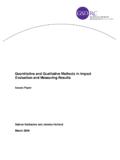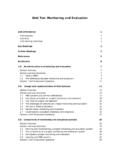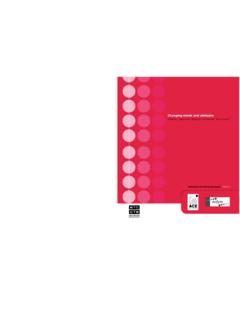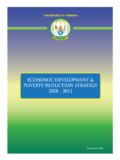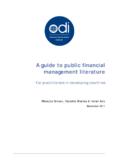Transcription of SHIFTING SOCIAL NORMS TO TACKLE VIOLENCE ... - …
1 SHIFTING SOCIAL NORMS TO TACKLE VIOLENCE AGAINST WOMEN AND GIRLS (VAWG) JANUARY 2016 | MICHAELJON ALEXANDER-SCOTT, EMMA BELL, JENNY HOLDEN SHIFTING SOCIAL NORMS TO TACKLE VIOLENCE AGAINST WOMEN AND GIRLS (VAWG) | JANUARY 2016 2 About this Guidance Note This guidance note was produced by the dfid -funded VIOLENCE Against Women and Girls (VAWG) Helpdesk on behalf of the dfid VAWG team in the Inclusive Societies Department. The lead author and expert is Michaeljon Alexander-Scott (M&C Saatchi World Services). The other authors are Jenny Holden and Emma Bell ( SOCIAL Development Direct). The note was informed by technical advice from a group of experts: Dr Lyndsay McLean Hilker (Technical Team Leader of VAWG Helpdesk, SOCIAL Development Direct), Dr Philly Desai (Turnstone Research), Lori Heise (London School of Hygiene and Tropical Medicine), Tina Musuya (Director of CEDOVIP, Uganda) and Saugato Datta (ideas 42).
2 It also underwent a peer review process by a number of dfid staff Isabelle Abbott-Pugh, Richard Boden, Katie Chapman, Anna Downs, Paul Healey, Fauzia Issaka, Mamta Kohli, Simon Narbeth, Lara Quarterman, Beth Scott, Rachel Yates, Benji Zeitlyn. Who this note is for This guidance note is intended to support dfid advisors and programme managers with evidence, relevant examples and practical guidance on how to address harmful SOCIAL NORMS in the context of programming to prevent VAWG. About the VIOLENCE against Women and Girls Helpdesk The VIOLENCE against Women and Girls (VAWG) Helpdesk is a research and advice service for dfid (open across HMG) providing: Rapid Desk Research on all aspects of VAWG for advisers and programme managers across all sectors (requests for this service are called queries ).
3 This service is referred to as the VAWG Query Service . Short term VAWG expert Country Consultancy support in dfid programme countries including research and advice on programme design, formation of programme documentation, implementation, review and evaluation; referred to as Short-term Country Assignments ; Technical Guidance Material primarily targeted to dfid staff, but also useful across HMG and development partners; Strategic Engagement and support to the dfid VAWG Team. Previous Guidance Notes produced by the VAWG Helpdesk include: Addressing VAWG through security and justice programming (2013) Addressing VAWG in education programming (2014) Addressing VAWG through economic development and women s economic empowerment (2015) Addressing VAWG through health programming (2015) The VIOLENCE against Women and Girls (VAWG) Helpdesk Service is provided by an alliance comprising of SOCIAL Development Direct, ActionAid, the Institute of Development Studies (IDS), International Rescue Committee (IRC), Womankind Worldwide and a wider roster of experts.
4 For further information, please contact: Suggested citation Alexander-Scott, M. Bell, E. and Holden, J. (2016) dfid Guidance Note: SHIFTING SOCIAL NORMS to TACKLE VIOLENCE Against Women and Girls (VAWG). London: VAWG Helpdesk Cover image: ActionAid (2013) SHIFTING SOCIAL NORMS TO TACKLE VIOLENCE AGAINST WOMEN AND GIRLS (VAWG) | JANUARY 2016 3 Table of Contents About this Guidance Note .. 2 Who this note is for .. 2 About the VIOLENCE against Women and Girls Helpdesk .. 2 4 Executive Summary .. 6 The role of SOCIAL NORMS in driving VAWG .. 7 Diagnosing, identifying and measuring SOCIAL NORMS .. 11 Key principles for programme design .. 19 A framework for programme design .. 22 Case studies and examples of promising practice.
5 27 Bibliography .. 37 Annex A: Value for money approaches to VAWG interventions .. 41 Annex B: SOCIAL NORMS approach checklist .. 48 SHIFTING SOCIAL NORMS TO TACKLE VIOLENCE AGAINST WOMEN AND GIRLS (VAWG) | JANUARY 2016 4 Introduction VIOLENCE against women and girls (VAWG) is the most widespread form of abuse worldwide, affecting on average one third of all women globally in their VAWG undermines the mental and physical health of women and girls, violates their human rights and can have a negative impact on long-term peace and In line with its international and national commitments, preventing VAWG is a top priority for the UK Government and Although the development community has long recognised the importance of attitudes, NORMS , and beliefs that justify VIOLENCE and gender inequality in perpetuating VIOLENCE against women and girls (VAWG)
6 , there has often been a lack of clarity about the definitions of and relationships between these constructs and the practical implications for programme design and evaluation. This Guidance Note therefore aims to clarify these constructs, summarise the role of SOCIAL NORMS in sustaining harmful behaviours and contributing to VAWG, and provide practical guidance and advice for dfid advisors and programme managers on how to identify and address harmful SOCIAL NORMS in the context of programming to prevent VAWG. Much research and best practice on SOCIAL NORMS interventions derives from programmes designed to TACKLE harmful practices such as Female Genital Mutilation/Cutting (FGM/C) and Child, Early and Forced Marriage (CEFM).
7 This Guidance Note will focus primarily on tackling the harmful SOCIAL NORMS that underpin perpetration of Intimate Partner VIOLENCE (IPV) and non-partner sexual VIOLENCE , given the high prevalence of these types of VIOLENCE and the limited practical guidance that currently exists on designing and implementing effective programmes. This note recognises that the evidence base on what works to TACKLE SOCIAL NORMS that drive VIOLENCE is at an early stage in scope and scale, although progress is being made through initiatives such as the dfid -funded What Works to Prevent VAWG The evidence base is limited for two key reasons. Firstly, until recently, very few programmes have used SOCIAL NORMS theory to guide programme 1 WHO, MSC and LSHTM (2013) 2 Ibid.
8 3 dfid (2014) 4 VIOLENCE AGAINST WOMEN AND GIRL AFFECTS ON AVERAGE ONE THIRD OF ALL WOMEN GLOBALLY IN THEIR LIFETIME. SHIFTING SOCIAL NORMS TO TACKLE VIOLENCE AGAINST WOMEN AND GIRLS (VAWG) | JANUARY 2016 5 development. Secondly, there has been a lack of consensus on the key metrics with which to measure SOCIAL NORMS change, and robust evaluations of programmes (even those can be classed as SOCIAL NORMS interventions post hoc) are very scarce. This Guidance Note therefore focuses on promising practices for programme design and provides practical guidance on monitoring and evaluation, so that dfid programmes can both benefit from and contribute to the emergent evidence base. This Guidance Note is to be read in conjunction with dfid s Theory of Change on Tackling VIOLENCE against Women and Girls and builds on previous dfid Guidance Notes including A Practical Guide on Community Programming on VIOLENCE against Women and It also complements the recent World Development Report 2015: Mind, Society and Behaviour, by the World Bank, which provides an in-depth introduction to behavioural science and its impact on, and implications for, development programming.
9 This Guidance Note is also intended as a practical companion to the upcoming dfid Topic Guide on Behavioural Economics and SOCIAL NORMS . This Guidance Note draws on SOCIAL NORMS theory and the work of women s rights organisations and SOCIAL justice movements with practical experience in this area, as well as behavioural science, behavioural economics and SOCIAL network theory6, where most appropriate. 5 dfid (2012a, 2012b) 6 SOCIAL network theory looks at how groups of people interact and influence each other. See Christakis and Fowler (2011) SHIFTING SOCIAL NORMS TO TACKLE VIOLENCE AGAINST WOMEN AND GIRLS (VAWG) | JANUARY 2016 6 Executive Summary 1.
10 SOCIAL NORMS are shared beliefs about what is typical and appropriate behaviour in a valued reference group. They can be defined as a rule of behaviour that people in a group conform to because they believe: (a) most other people in the group do conform to it; and (b) most other people in the group believe they ought to conform to it. 2. These beliefs shape mutual expectations about appropriate behaviours within the group, and in turn the actual behaviour of groups of individuals. As a result, these behaviours are said to be inter-dependent . 3. What an individual believes others expect of him or her (and the sanctions and rewards that may follow) can be a more powerful driver, or constraint, than individual attitudes, or the law.










